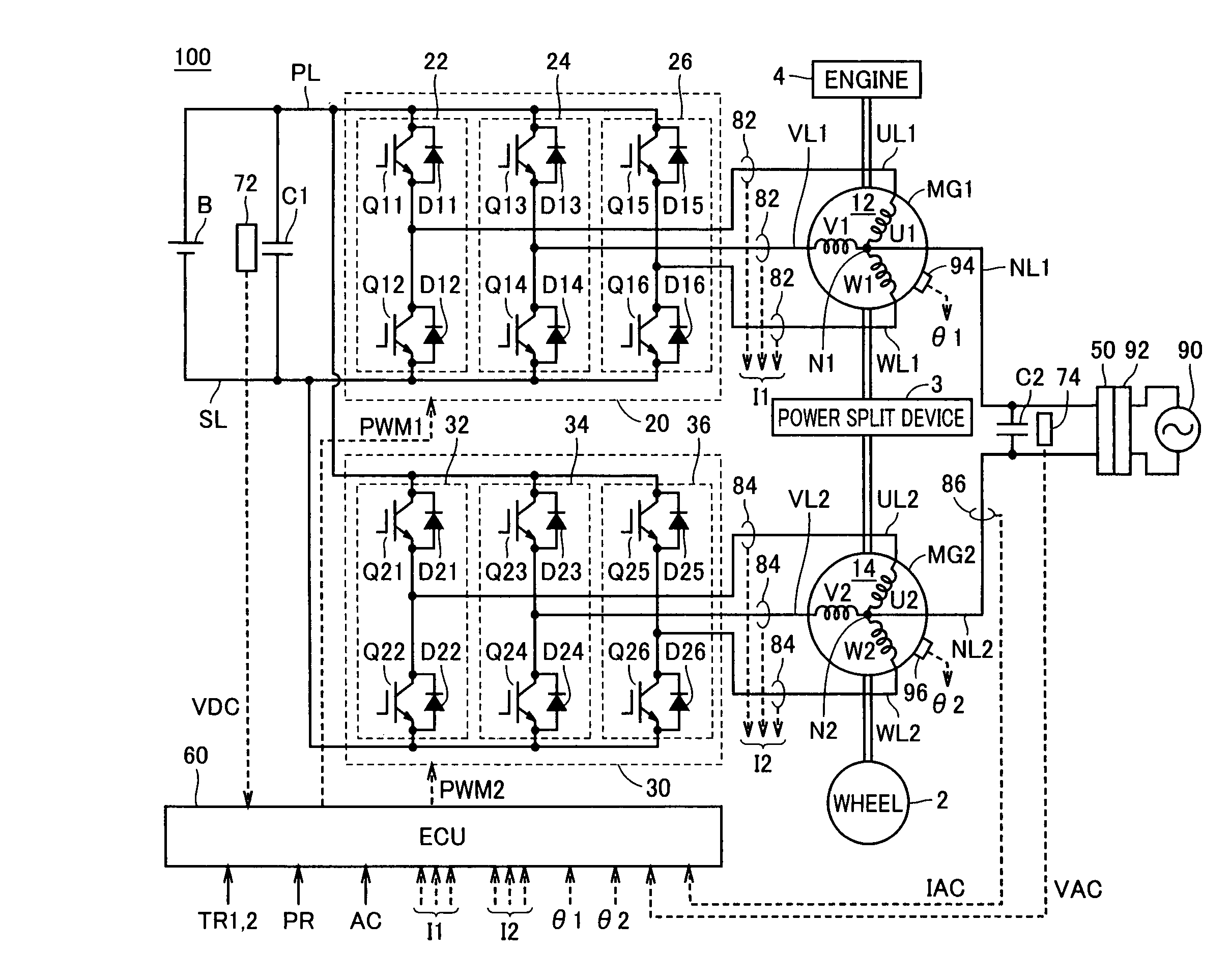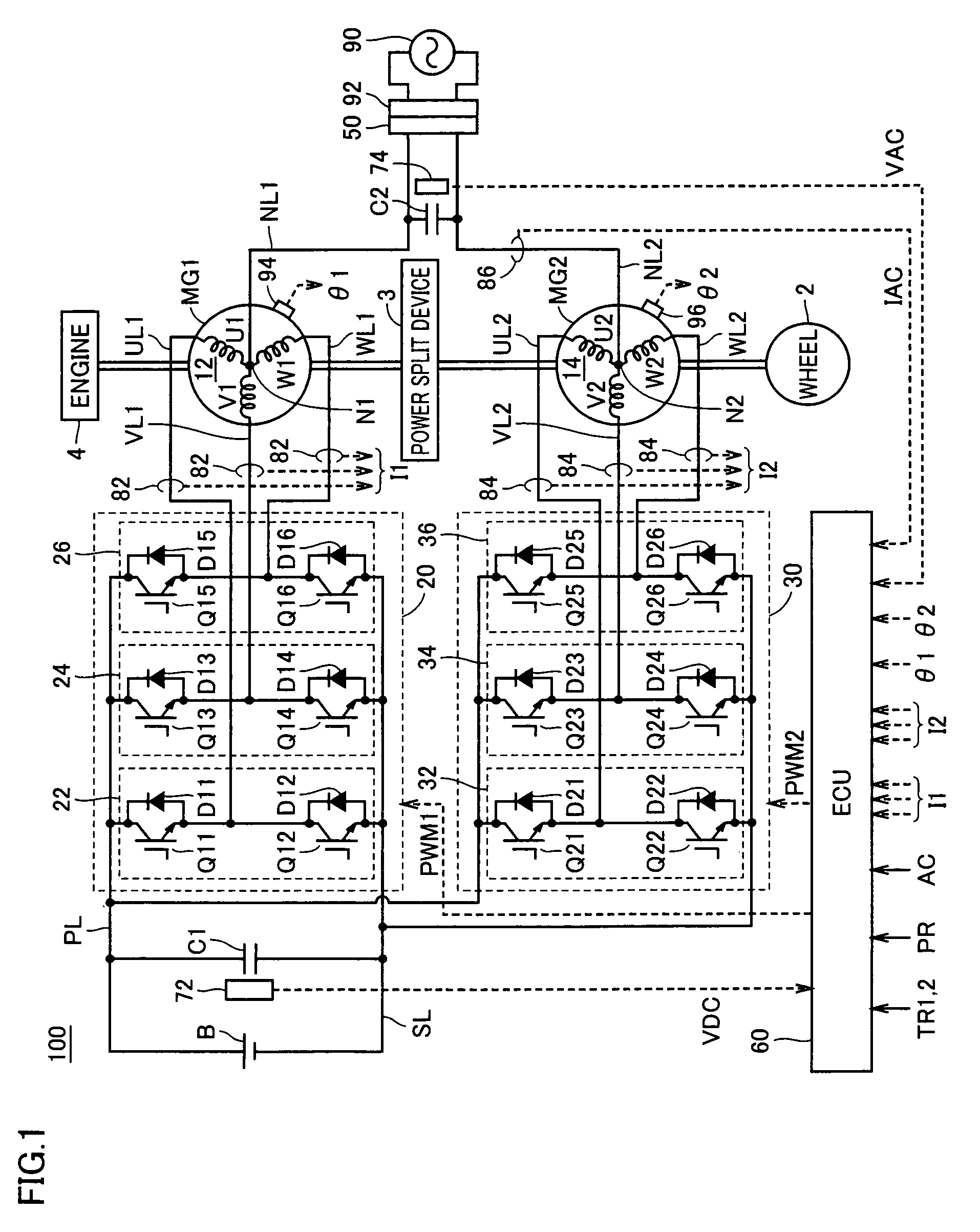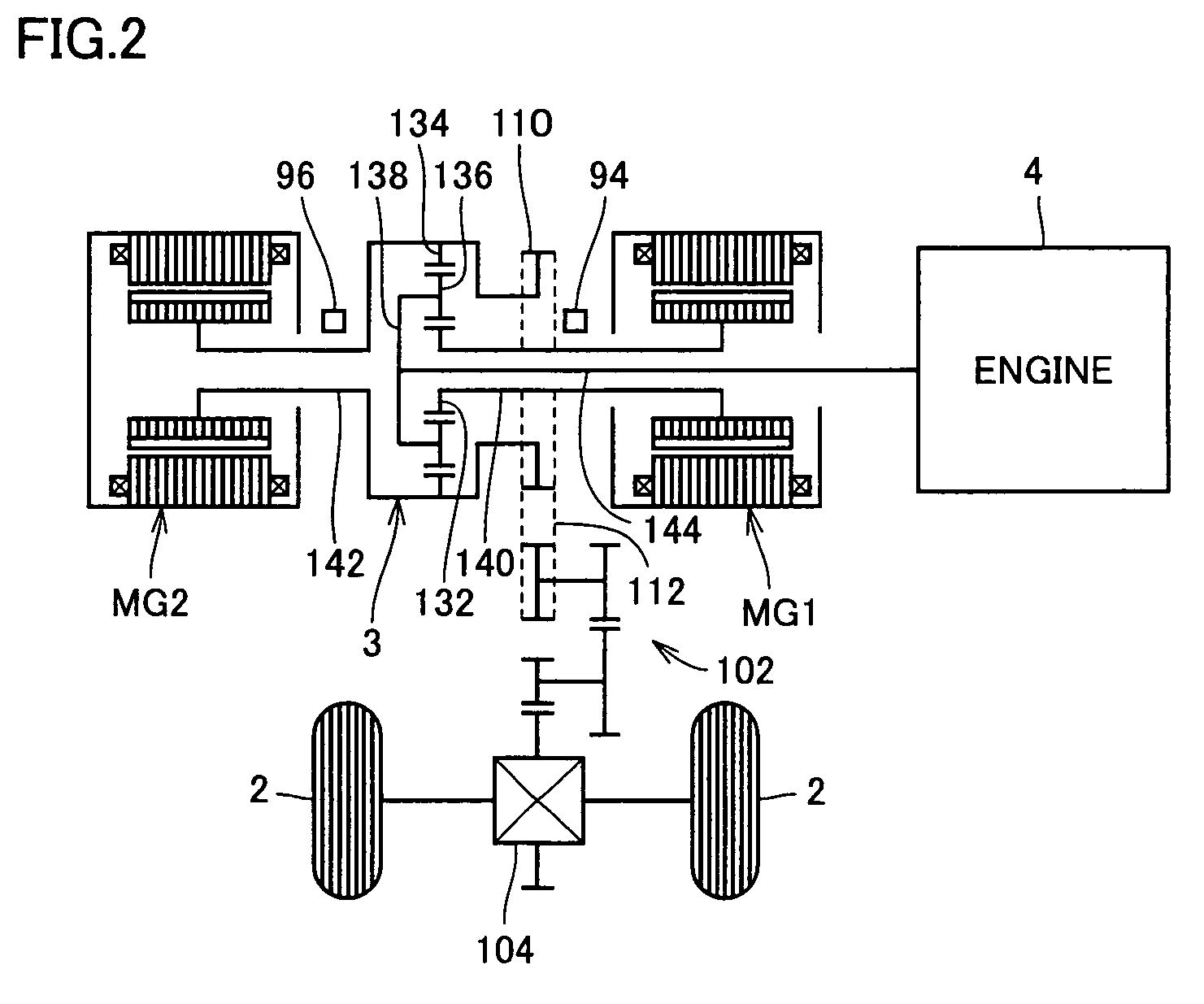Charge control device and vehicle using the same
a control device and a technology for vehicles, applied in the direction of electric devices, machines/engines, process and machine control, etc., can solve the problems of motor generation torque, increased ripple influence to the input side, only utilizing leakage inductance, etc., to achieve sufficient inductance and reliably prevent the movement of the vehicle
- Summary
- Abstract
- Description
- Claims
- Application Information
AI Technical Summary
Benefits of technology
Problems solved by technology
Method used
Image
Examples
embodiment 1
[0041]FIG. 1 is an overall block diagram of the hybrid vehicle shown as an example of the vehicle in accordance with Embodiment 1 of the present invention. Referring to FIG. 1, a hybrid vehicle 100 includes an engine 4, motor generators MG1 and MG2, a power split device 3, and wheels 2. Hybrid vehicle 100 further includes a power storage device B, inverters 20 and 30, and an ECU (Electronic Control Unit) 60.
[0042]Hybrid vehicle 100 further includes a capacitor C1, a power line PL, a ground line SL, U-phase lines UL1 and UL2, V-phase lines VL1 and VL2, W-phase lines WL1 and WL2, a voltage sensor 72, current sensors 82 and 84 and resolvers 94 and 96. Hybrid vehicle 100 further includes power lines NL1 and NL2, a connector 50, a capacitor C2, a voltage sensor 74, and a current sensor 86.
[0043]Hybrid vehicle 100 runs using engine 4 and motor generator MG2 as power sources. Power split device 3 is coupled to engine 4 and to motor generators MG1 and MG2, and distributes power among these....
embodiment 2
[0100]In Embodiment 1, during charge control, only one phase of inverter 20 is controlled to attain large conductance, and motor generator MG2 is caused to generate a torque that cancels out the torque generated by motor generator MG1.
[0101]In Embodiment 2, during charge control, rotation resistance of engine 4 is lowered, so that the torque generated by motor generator MG1 is not transmitted through power split device 3 to the driving shaft. Therefore, rotation resistance of carrier shaft 144 coupled to engine 4 is reduced, and even if sun gear shaft 140 coupled to motor generator MG1 rotates, carrier shaft 144 rotates accordingly and, therefore, transmission of the torque to ring gear shaft 142 coupled to the vehicle driving shaft can be prevented.
[0102]FIG. 7 is a flowchart representing the charge control in accordance with Embodiment 2. Referring to FIG. 7, ECU 60 determines whether charge control is in progress or not based on the signal AC (step S110). If it is determined that...
embodiment 3
[0107]In Embodiment 3, a clutch is provided between carrier shaft 144 and engine 4, and at the time of charge control, the clutch is set to a disengaged state, to reduce rotation resistance of carrier shaft 144.
[0108]FIG. 8 shows a schematic configuration of a power output mechanism in the hybrid vehicle in accordance with Embodiment 3. Referring to FIG. 8, the power output mechanism in accordance with Embodiment 3 corresponds to the configuration shown in FIG. 2 and additionally includes a clutch 150 and a clutch actuator 152.
[0109]Clutch 150 is arranged between a crankshaft 115 of engine 4 and carrier shaft 144. Clutch actuator 152 engages and disengages clutch 150, based on a signal CR from ECU 60, not shown. Specifically, when the signal CR is active, clutch actuator 152 sets clutch 150 to the disengaged state, and when the signal CR is inactive, it sets clutch 150 to the engaged state.
[0110]In Embodiment 3, during charge control, the signal CR is activated and clutch 150 is set...
PUM
 Login to View More
Login to View More Abstract
Description
Claims
Application Information
 Login to View More
Login to View More - R&D
- Intellectual Property
- Life Sciences
- Materials
- Tech Scout
- Unparalleled Data Quality
- Higher Quality Content
- 60% Fewer Hallucinations
Browse by: Latest US Patents, China's latest patents, Technical Efficacy Thesaurus, Application Domain, Technology Topic, Popular Technical Reports.
© 2025 PatSnap. All rights reserved.Legal|Privacy policy|Modern Slavery Act Transparency Statement|Sitemap|About US| Contact US: help@patsnap.com



